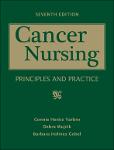Item Infomation
Full metadata record
| DC Field | Value | Language |
|---|---|---|
| dc.contributor.author | Yarbro, Connie Henke | - |
| dc.contributor.author | Wujcik, Debra | - |
| dc.contributor.author | Gobel, Barbara Holmes | - |
| dc.date.accessioned | 2020-06-15T02:25:51Z | - |
| dc.date.available | 2020-06-15T02:25:51Z | - |
| dc.date.issued | 2011 | - |
| dc.identifier.uri | https://dlib.phenikaa-uni.edu.vn/handle/PNK/383 | - |
| dc.description.abstract | In his now classic writings on the origin of cancer, Sir Richard Doll1 proposed 3 potential causative factors underlying tumor development: (1) environmental factors, particularly diet, industrial pollution, and viruses; (2) systemic factors, including breakdowns in immunosurveillance; and (3) genetic factors, such as the degree of susceptibility to cancer. Since Doll’s publications in the late 1970s, the biology underlying these proposed causative factors—which were derived largely from epidemiological studies—has been carefully scrutinized to determine the causes of cancer at the biochemical, cellular, and molecular levels. Because of the intensity of biological research and the rapidity with which findings have become available, we now know that cancer is a disease resulting from the interaction of multiple factors at the cellular, genetic, immunologic, and environmental levels. A fundamental goal of cancer research is to discern mechanisms of cancer cell development, ways that cancers grow and spread, and, finally, the means to correct abnormal mechanisms and to prevent, eradicate, and/or control cancer cell populations. This chapter reviews theories and models of tumor development, properties of cancer and transformed cells, genetic influences on cancer, the cell cycle, apoptosis, and metastasis. | vi |
| dc.language.iso | en | vi |
| dc.publisher | Jones and Bartlett Publishers | vi |
| dc.subject | Nursing | vi |
| dc.subject | Cancer | vi |
| dc.title | Cancer nursing principles and practice | vi |
| dc.type | Book | vi |
| Appears in Collections | ||
| BST Điều dưỡng | ||
Files in This Item:

